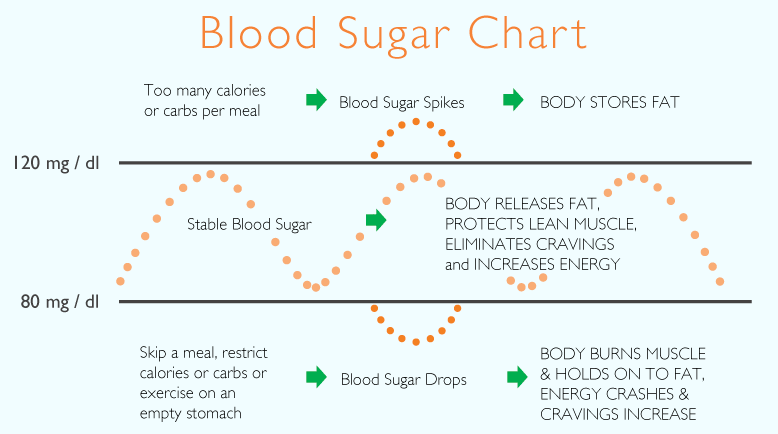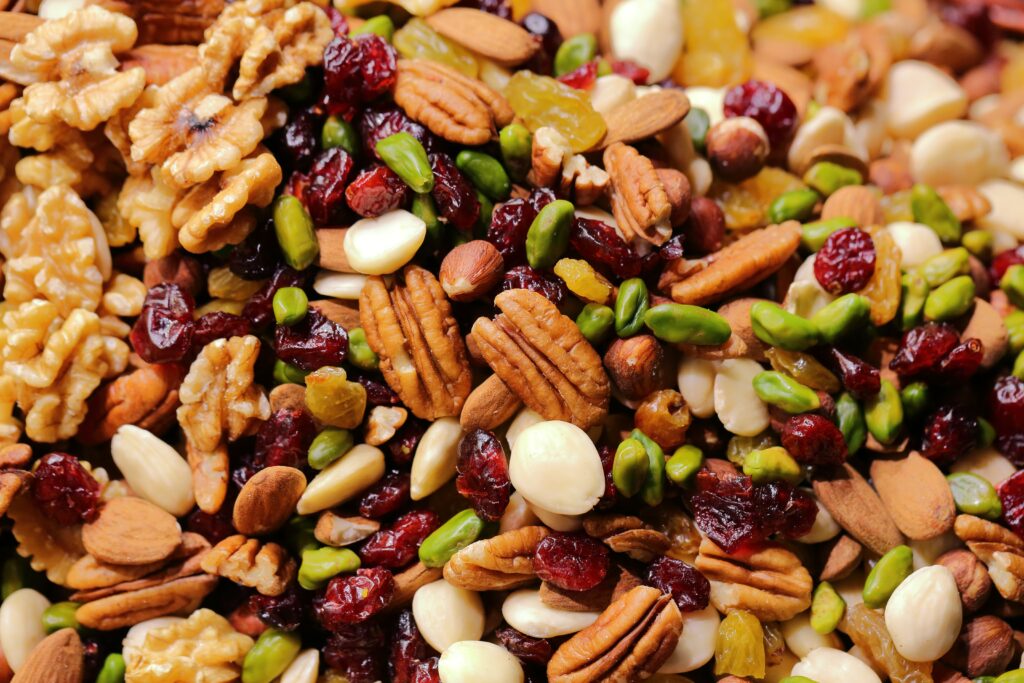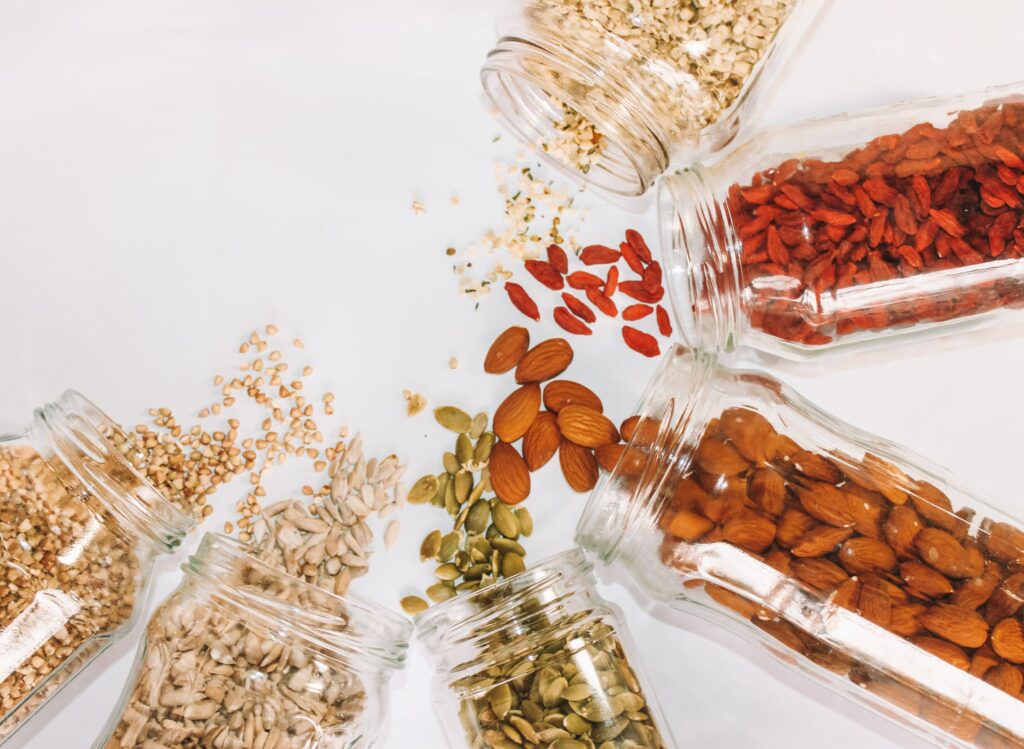Let’s talk about blood sugar. Without knowing exactly what it means, you’ve probably heard of the term. Balancing blood sugar is key—it plays a role in energy, feelings, cognitive function, and more. In fact, you may already be familiar with spikes and dips in blood sugar. Hello, intense carb cravings! That said, few recognize its effects on a daily basis. In this article, you’ll get the 411 on blood sugar: what it is, why it matters, and simple ways to balance blood sugar.

What is Blood sugar?
BLOOD SUGAR = THE AMOUNT OF SUGAR (OR GLUCOSE) IN YOUR BLOOD AT ANY GIVEN TIME.
Sugar, or glucose, is the body’s main source of energy. The term “blood sugar” refers to the amount of energy (sugar) present in our bloodstream at one set time. Sugar is produced when we break down any form of carbohydrate. Be it an orange, slice of cake, or piece of toast, that carb is absorbed into our bloodstream. Immediately or eventually, carbohydrates are used as a source of energy.
Why is blood sugar regulation important?
Ideally, you want to keep your blood sugar levels in your target range—as often as possible. This helps prevent (or delay) long-term, serious health problems. Think: heart disease, vision loss, and type 2 diabetes. On a daily basis, staying in your target range is equally important. It can improve energy, balance hormones, minimize sugar cravings, and stabilize your mood. Speaking of hormones, if you struggle with intense PMS or PCOS, this could be a result of mismanaged blood sugar. Fortunately, there’s a solution. By wearing a continuous glucose monitor, you can feel much more vibrant, energetic, and focused!

What is insulin resistance?
When your body doesn’t make enough insulin (or doesn’t use it effectively), blood sugar levels rise abnormally. But for context, what is insulin? Insulin is a hormone. And it’s very important in regulating blood glucose, as it helps glucose enter your cells—which they use for energy. However, if you eat an abundance of refined carbs and sugar (particularly without adding a healthy fat or source of protein alongside!) your body requires more and more insulin to manage blood sugar. Over time, your body becomes insulin resistant. When this happens, insulin is no longer able to shuttle glucose into your cells. This creates two problems: excess glucose begins to accumulate in the bloodstream and your cells become starved for energy. This is known as insulin resistance.

symptoms of blood sugar Imbalance
To reiterate: if you’re insulin resistant, blood sugar is disrupted. In turn, you end up with a variety of symptoms—low energy, intense cravings, increased hunger, irritability, sleeping disruption, trouble concentrating, hormonal imbalances, increased fat storage (particularly around your belly), and more.
How to balance blood sugar with food
But good news! Insulin resistance can be corrected with changes in diet and lifestyle habits. Below are five ways to balance blood sugar via nutrition.
Choose complex Carbs
Opt for complex carbs, rather than processed or refined ones. For example, low-glycemic fruit (berries), beans, legumes, sweet potatoes, squash, steel-cut or rolled oats, brown rice, quinoa, spelt flour, and 100% whole wheat flour.
add fiber
Fiber—particularly soluble fiber—can slow the absorption of sugar and help improve blood sugar levels. Nuts, seeds, vegetables (especially leafy greens), and 100% whole grains are all wonderful sources of fiber. My daily go-to sources of fiber are chia and ground flaxseed.
build a balanced plate
Here are examples! When making your meals, you want all of these key players: Complex carbs, protein, healthy fat, and fiber. Doing so is imperative to balancing blood sugar. Protein helps to balance blood sugar levels, and fat helps to slow the absorption of glucose to the bloodstream. A balanced plate could look like a filet of roasted salmon with a side of sautéed spinach (in ghee) and jasmine rice topped with a drizzle of tahini.
eat in regular intervals
Fuel up every 3-4 hours. If you have a tendency to skip breakfast (or lunch), make it a goal to eat every 3-4 hours. This helps keep your blood sugar consistent and aids in digestion. This not only creates a more stable energy source, but your metabolism will be engaged at optimal levels all day long. In essence, a skipped meal alters the balance between food intake and insulin production. It can cause your blood sugar levels to drop. Vice versa, eating every couple of hours throughout the day can cause a consistent spike in glucose.
read labels
Last but not least, read labels. Just because a packaged food is labeled “sugar-free” or “gluten-free” doesn’t mean it won’t have an impact on blood sugar. Be wary of labels. Instead, read the ingredient list and skim the nutrition label. As far as processed foods are concerned, aim for more than five grams of fiber per serving. Those with very little fiber (less than five grams) can cause a spike in blood sugar.
Honoring cravings while balancing blood sugar
All of that said, I encourage you to honor your cravings. At the end of the day, food is more than just fuel. It’s steeped in culture, tradition, and love. In other words, you can keep blood sugar in mind while still eating the foods you enjoy. As a nutrition consultant, I help my clients focus on both eating for pleasure and building a plate of nutritionally gratifying foods. It is possible to experience the incredible impact of being fully nourished, without feeling deprived. Deprivation is never the goal. Said differently: food can make you feel energized and satisfied without sacrificing flavors and textures! This combines the best of both worlds—eating intuitively while keeping blood sugar in check.

Wear a continuous Glucose monitor
Say hello to next-generation wellness tech: the continuous blood glucose monitor. Also known as a CGM, this wearable health monitor displays in-the-moment info about your blood sugar. Specifically, it shows how your body reacts to foods, stressors, exercise, sleep, and more. As you live your life, your CGM is taking stats. Continuous glucose monitoring devices, like Levels, are the new frontier of wellness. To learn more about these life-changing devices, click here.
Images courtesy of Unsplash. This article contains affiliate links. Thank you for supporting Wellness with Edie! Thank you for supporting Wellness with Edie! This article is for informational purposes only. It is not, nor is it intended to be, a substitute for professional medical advice, diagnosis, or treatment and we recommend that you always consult with your healthcare provider.



Leave a Reply